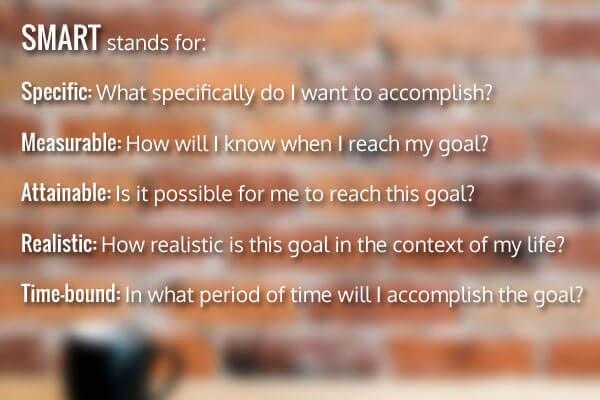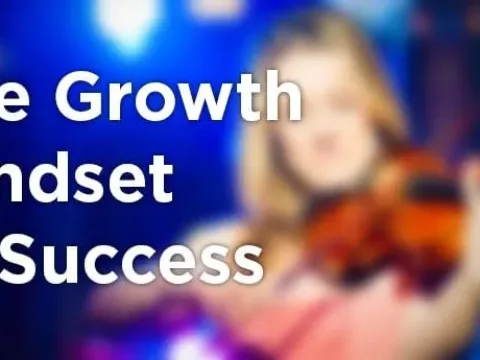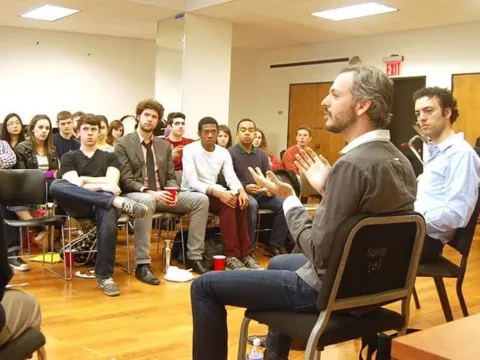Musicians abound with passion and creative ideas. For many, however, this abundance of ideas can be paralyzing since they find it hard to figure out which ones to harness, let alone how to make them happen.
Last time, I wrote about the mindset that makes it possible to take those big ideas and translate them into reality. This time, let’s examine the process by which you can make your idea happen.
1. Write down your goal with a time period
The first step to achieving your goals is to write them down!
A recent study confirms the view that people who write down their goals, share the information with a friend and send weekly updates are 33% more likely to achieve their goals than those who do not engage in this process.
In addition to writing down your goal, assign a time period within which to accomplish that goal and frame your goal in the present tense: I am doing vs. I will be doing.
Writing a goal in the present tense can be inspiring since you are envisioning that possibility in real terms. The same goes for seeing your goal on written down on a piece of paper or on a computer screen along with a due date.
And it is also scary! For many musicians, this is the opportunity for the voice of the inner critic to pop up and say, “Are you kidding? You really think you can make it into an orchestra/chamber ensemble/university/touring group in 5 years?”
However, music entrepreneurs are by nature optimistic and see the possibilities! So rather than listening to the voice of the inner critic, they forge ahead.
So please write down your goal, expressed as follows:
In ____ years, I am doing _________.

2. Set SMART goals
Congratulations for writing down your goals. What’s next?
Let’s take a goal from one of my students whom we shall call Nicole*:
In 7 years, I am the founder of a new chamber music festival in Sydney, Australia.
Nicole is someone with lots of ideas who sometimes becomes overwhelmed by her vision and then has a tendency to shy away from working on her big ideas. Her initial reaction to writing down her vision with a due date was shock! Can I really do this?
I invited Nicole to take part in an experiment that could help her break down this idea into manageable bits: The SMART-goal process.
SMART stands for:
Specific: What specifically do I want to accomplish?
Measurable: How will I know when I reach my goal?
Attainable: Is it possible for me to reach this goal?
Realistic: How realistic is this goal in the context of my life?
Time-bound: In what period of time will I accomplish the goal?
Not only is this process is a great way to turn big goals into daily action steps, but it also contains a built-in reality check.
Let’s examine each step:
Specific
Goals need to be specific so that you know what you are going after! If your goal is to be a “successful musician”, that is a wonderful aspiration but what does that mean? Money in the bank? Lots of concerts? A steady teaching job? Creating something new (and if so, what?). It’s up to you to define your goal in such a way that you know what is you are aiming to create.
Measurable
Goals need to be measurable so that you know when you have achieved them.
How much money in the bank?
What kind of teaching job? Full time or a series of part-time teaching jobs? Institutional teaching or private studio or a combination?
What kind of “new creation”? A type of activity? A new venue? A new genre of music? Where? What kind of audience?
It’s up to you to provide the metrics so you know that you have achieved success and you can then build on your success to move forward.
Attainable
This question tests whether or not you believe that you can reach your goal. If you believe in your heart of hearts that you can make your dream happen, that will go a long way into fueling the hard work that is required for achieving a big goal. If, on the other hand, you have any doubts about it, you will not be able to project the confidence that you need to convince yourself to work towards that goal or to inspire others to join you in making your goal come true.
This is where attitude and positive energy come in. If you truly believe in something and are willing to do whatever it takes to get there, this will go a long way to helping you achieve those goals…as long as you have the necessary skills and experience or can attain them. That is where “R” or Realistic part of a SMART goal comes in:
Realistic
How realistic is this goal in the context of my life?
Right there, you have to think about your level of knowledge and experience, the time that you have to devote to this goal, the feasibility of your goal, the resources at your disposal, the challenges you face and your level of interest in pursuing it.
If you go through this calculus and conclude that you can do it, terrific! If not, you can modify your goal in such a way that you can achieve success. Or, you may realize that you need more knowledge and experience, in which case acquiring such knowledge and experience could become the interim goal that you need.
Time-bound
The last element of a SMART goal requires that you set a time period within which you want to achieve that goal. So you want to be a successful musician? By when? Posthumously? 10 years? Tomorrow?
Goals without a time period are merely a wish. So take the plunge and set a time period. You an always change it if you find that your time goal is not realistic.

3. Follow the SMART Process
A good way to start the process of breaking down your big dream is to focus on what you have going for you. Accordingly, I asked Nicole about her resources:
- She is a wonderful musician.
- She knows a lot of other talented musicians who could serve as faculty members for the festival.
- Her musician boyfriend is from Sydney and he knows a lot of people there.
- She loves creating new things.
Then, we zeroed in on her challenges:
- Fundraising: she knows that she will need to find sponsors and donors and other sources of funds but she does not know how to fundraise
- Marketing: she is not knowledgeable about marketing.
- Festivals: she does not know how to start a festival
- Logistics: she will need to find space for the festival, as well as concert venues.
She decided that the first area to tackle was fundraising. This is where we began to break down her vision through a SMART goal.
One reason for overwhelm is that it is hard to see what needs to be done in order to achieve a big vision. One helpful strategy is to bring the big goal into a closer time period in which you can begin to see success.
I asked Nicole where she had to be in 1 year with respect to being able to fundraise for the festival.
In one year, she will contact potential donors and funders for the festival.
We further broke down the goal by setting a shorter-term goal of May 2014, when Nicole will graduate from Yale:
By May 2014, she will know how to fundraise for a festival in Australia.
We took that goal into an even closer time period: March 2014.
In this 2-month period, Nicole has set a goal to learn about the key strategies to fundraising in the US and decided that successfully achieving this goal would propel her to further action. This, then, became her SMART Goal.
Initially, she set a time line of early March. However, she realized that she would need to take advantage of spring break in order to have enough time to complete this goal. She therefore extended the due date of her SMART goal to the end of March.
So here is her SMART goal:
By the end of March 2014 (T), Nicole will be knowledgeable about the different strategies for how to fundraise in the US (S).
She will know when she has achieved this goal because she will be able to explain the mechanics of fundraising to someone else. Therefore, this goal is now measurable (M).
She is excited to undertake this inquiry and believes in her ability to accomplish this goal. Therefore, this SMART goal is attainable (A).
She also feels that she has plenty of resources available at Yale and through her network, as well as enough time, to make this goal realistic (R).
What’s more, the process of taking her big dream down to a SMART goal made Nicole very excited because she realized that she could begin working towards that goal right away.
And that’s the last step in achieving a SMART goal: to set SMART actions each week towards your goal.
This week, Nicole is getting in touch with another one of our students who produced and fundraised for her debut recital in her home country. Nicole will reach out to this student and make a coffee date with her to find out how she did it. Nicole will check in with me in a few weeks to let me know how her conversation went.
Brava, Nicole, for hanging in there and taking your dream down to a bite-size action step! I am excited to see how you progress over the semester and over the course of the year.
So the next time you find yourself fantasizing about a great idea, take an honest look at it through the lens of the SMART process. It can spur you on to greatness or help you avoid unnecessary expense of time and money that could be put to better use on something in which your passion and skill sets are in alignment.
Here’s to your successful SMART goal setting!
—
*The situation is real and I have changed the name to preserve anonymity

















